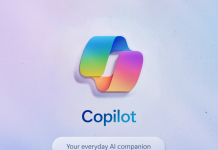Smartphones – they’ve lived up to their name and in the last few years and even outdone our expectations – evolving from capable pocket computers to indispensable everyday companions. And they’re not done yet! As we go into a world where Big Data and Machine Learning become commonplace, even smartphones are looking to step their game using embedded AI chips and Neural Networks.
But what can we realistically hope to achieve with Artificial Intelligence, especially when bound into the tiny confines of a portable handheld screen? And more importantly are these innovations something you should care about or are they mere buzzwords thrown in by manufacturers in an effort to move more numbers off the shelves?
Let’s find out!
AI in Smartphones: How Can They Help You?
Even before all the hype and the hoopla surrounding AI and neural networks, we have had a rudimentary form of artificial intelligence being available to us on our Android as well as iOS devices. Siri and Google Now, as limited as they are in their scope as virtual assistants, are both powered by machine learning and neural networks.
Today, we aren’t going to concentrate on virtual assistants though. As interesting as they are, most of us have witnessed their gradual progression and are quite familiar with their uses. Instead, we are going to take a look at the latest generation of flagship devices- the iPhone X , Samsung Galaxy S9, Pixel 2 XL and the Huawei V 10, in order to find out what embedded AI is capable of.
Apple has often flaunted the AR and VR capabilities of their latest silicone-the A11 Bionic. But what feats is the ‘neural engine’ inside this chipset capable of? Well if you have ever tried out portrait lighting on the new iPhone as well or the selfie portrait mode, then you’ve seen the AI features at work. In fact, at its current stage, most of the AI features inside smartphones are limited to NLP(natural language processing) and Image recognition.
That doesn’t mean that it isn’t impressive. One of the best cameras of yesteryear, the Google Pixel 2 and the Pixel 2 XL, used AI and Machine Learning to great effect. Google was able to use the power of Neural Network to mimic the workings of a dual camera setup while using just a single front and rear snapper.
But we have saved the show stoppers for the last. The neural networks that are available in the latest generation Snapdragon 845 (powered by the Hexagon 685 DSP) offer state of the art AI capabilities to the flagships of 2018. We have already seen them being put to great use while creating ARMojis and various scene effects on the Galaxy S9! As the year progresses, we will see more manufacturers using this feature on their smartphones with upcoming flagships like the Xperia XZ2 featuring a front camera that can 3D scan your entire face and then render it on the phone itself!
Other SoCs like the Exynos 9810 Octa from Samsung as well as the HiSilicon Kirin 970 from Huawei have also incorporated AI into their implementations and offer similar AR and VR powered experiences.
The Future of AI Powered Smartphones
The AI features that are available in the smartphones of today might not be that impressive but do not be hasty to judge their overall capabilities based on their fledgling efforts. A lot of manufacturers right now are guilty of using the AI buzzword, trying to make it seem like the entire phone is some sort of sentient supercomputer.
While that might be a complete exaggeration, the true future of AI powered smartphones lie in its ability to learn the habits and preferences of its users through machine learning and thus becoming the central hub that controls our IoT connected homes, offices and even commutes. That future, as sci-fi as it sounds, is nearly upon us and in that lies the true power of AI in smartphones!
Amartya is a tech vlogger, a CS engineer and an Android poet. Follow him on Twitter, Facebook, Google+ and LinkedIn.






